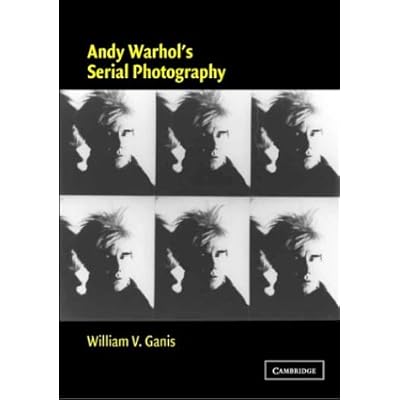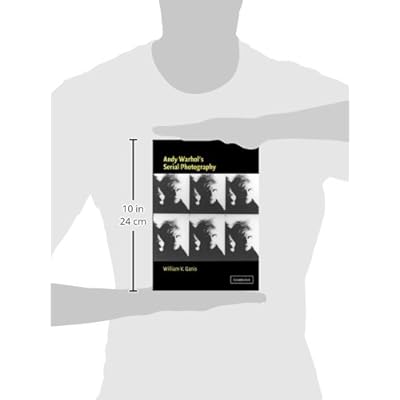Andy Warhol's Serial Photography (Contemporary Artists and their Critics)
Category: Books,New, Used & Rental Textbooks,Humanities
Andy Warhol's Serial Photography (Contemporary Artists and their Critics) Details
Book Description From 1982 to 1987, Andy Warhol made 503 works composed of black-and-white photographic prints stitched together with thread. These works are indebted to his earlier repetitive silkscreen paintings and are also the result of lifelong photographic exploration and a prolific decade when the artist shot over 124,000 frames. This book is the first scholarly monograph to interpret Warhol's enigmatic photographic series. Contextualizing them within the history of photography and the art world of the 1980s, William Ganis demonstrates how Warhol manipulates the tenets of modern art photography to create ambiguity in the perception of the images. Read more About the Author An art historian, critic, and assistant professor of art history at Wells College, William V. Ganis investigates the relationships among art, media technologies and the market. Read more

Reviews
Mr. Ganis has undertaken a very difficult task - i.e., to state his opinion about the photographs that existed in Andy Warhol's estate at the time of his death. There were apporoximately 60,000 photographs discovered. In addition, and equally relevant, was the fact that Andy Warhol saved everything. Junk mail, ticket stubs, anything and everything were thrown into card board boxes - that the artist referred to as "time capsules."Ganis describes the initial valuation of the photographs by Christie's Appraisals, Inc. as low, not only because of the debate of their status as art v. archival material, but also as a 'strategy of lawyers' to keep valuations low for the Andy Warhol Foundation's benefit and to reduce attorney's fees due to Edward Hayes (who had executed a contract to be paid 2% of the value of the estate for his services). This is a conclusion that is absolutely incorrect. As the author of Art In The Courtroom, I have read every transcript related to the underlying hearing in my analysis of the case referred to. The facts are that the Warhol Foundation asked Christie's to review the appraisal of photography because the Foundation, including it's president Archibald Gillies, thought that the values assigned were too low. Christie's appraiser, Rick Wester, stood firm in his decision as to value despite the Foundation's desire to have a higher appraisal. (It was obvious at the time, that a valuation battle would occur, and the Foundation did not want the valuation of photographs to be an easy target for a claim of being undervalued.)This error by Ganis is absolutely essential in considering the rest of the book.Warhol had 60,000 photographs in his estate. Warhol was an artist who had an artistic vision that would clearly be revealed in some of the photographs. Warhol, during his lifetime had only exhibited photographs in a single exhibit at Robert Miller Gallery - these were the "sewn photographs" which was an infitesimal portion of the 60,000 photographs. Warhol used photographs as the basis for his prints and his paintings.Do and should the photgraphs be considered "fine art" or archival material? It is easy to see that one could go through the photographs and pick out exceptional photographs that one might see in an auction catalogue. In fact, the gallery - Pace-McGill purchased a number of Polaroids and sought to sell them. Their initial efforts, pricing the Polaroids at $7,500 was somewhat successful, so they returned to the Foundation to purchase an additional group of photographs, but at a reduced price, because the $7,500 was too high. We see some of these self-portraits, portraits of Truman Capote and others come up for sale at auction ocassionally.I would absolutely agree that some of Warhol's genious is exemplified in his photography. But, I also question whether something an artist never presented as fine art, should be considered such in hindsight.Getting back to the appraisal - the question that Rick Wester faced on cross-examination was - do you mean to tell me that you value Warhol's photographs in the same amount of photographs that I might take of the Plaintiff in the case - no more? The answer was yes. The valuation issue was difficult because one would assume that people would pay $10 or $20 per photograph (or more) simply because they were taken by Warhol. But then, wouldn't every scrap of paper in a "time capsule" also have some value - people would purchase an envelope addressed to Warhol for $5. Were the "time capsules" a form of Warhol's art to be discovered only after his death?The conclusion as to the values of the photographs was not determined in accord to a strategy of attorneys. It was determined by Rick Wester (and his predecssor who had done the initial draft of the appraisal) in accord with their understanding of appraisal methodology and their conslusions as to art v. archival.The cover of the book exemplifies the problem. It is beautiful. But Andy never said I am taking photographs as fine art (and will sell them in galleries). Is it appropriate to second guess the artist? I would argue that it is not. Thank you.



